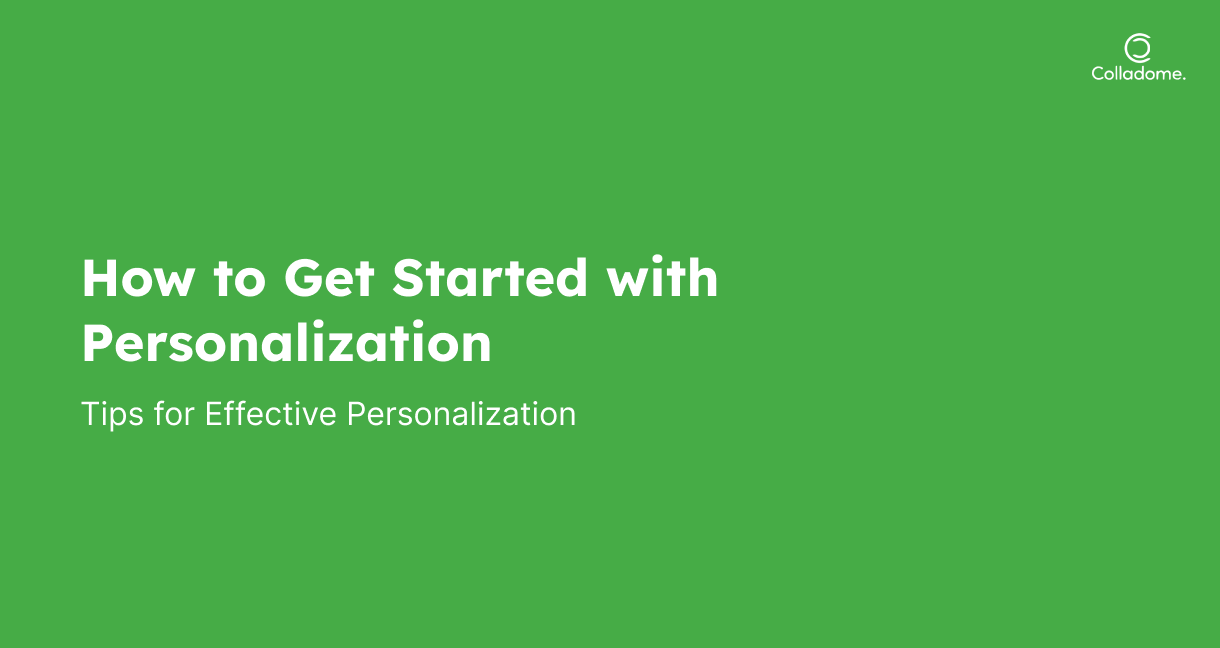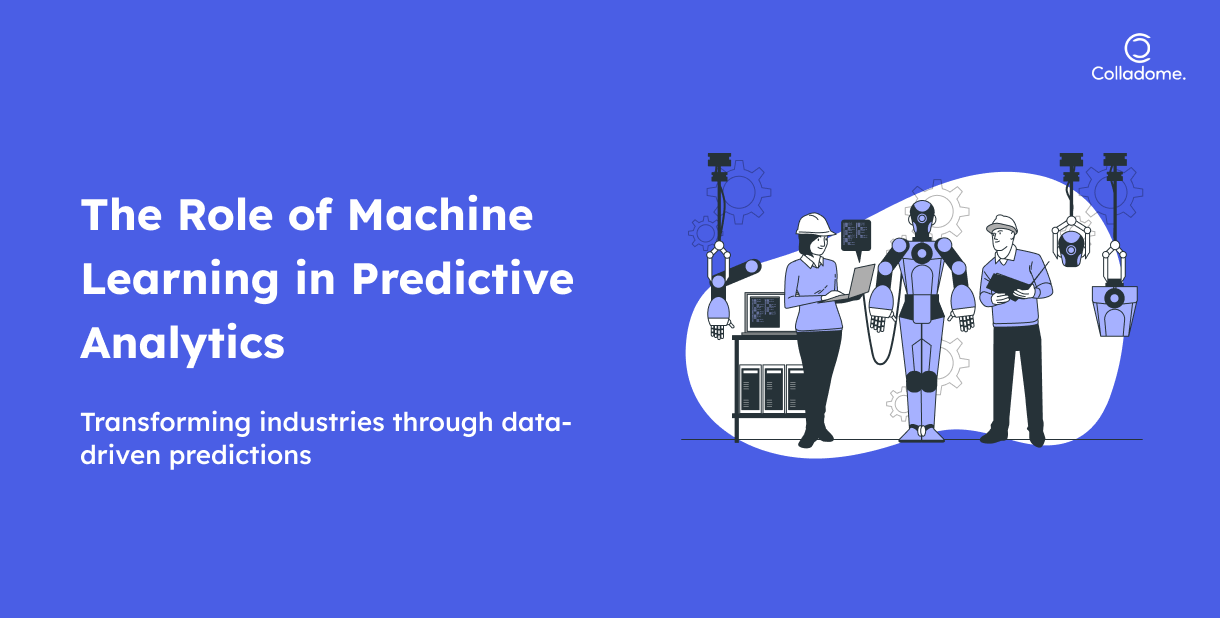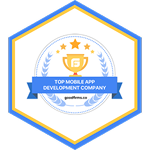Introduction
Hey there! Ever noticed how some ads or emails feel like they were made just for you? That’s the magic of personalization in digital marketing. Gone are the days of generic, one-size-fits-all strategies. In today’s fast-paced, hyper-connected world, customers crave relevance, and brands that deliver it hit the jackpot.
This is where personalized marketing comes in. By leveraging tools like marketing automation, AI, and data-driven marketing, companies create experiences that speak directly to individual preferences. Whether it’s a product recommendation based on your shopping history or an email with your favorite kind of deals, personalization makes all the difference.
Why does it matter? Because it drives results. Personalized campaigns boost customer engagement, increase loyalty, and enhance customer retention. In fact, brands using content personalization see higher conversion rates and happier customers. With tools like predictive analytics and segmentation, personalization becomes a game-changer for crafting tailored strategies.
So, why not embrace it? By tapping into data and using personalized marketing strategies, you can transform how customers perceive your brand. The best part? It’s not just effective—it’s fun to see how creative and specific your campaigns can get!
Why Personalization Matters
Let’s talk about why personalization in digital marketing is such a big deal. Spoiler alert: it works. And when done right, it drives some seriously impressive results. Here’s why:
Customer Expectations Are Sky-High
Let’s face it: today’s customers expect brands to get them. A 2023 survey by Salesforce revealed that 73% of customers expect companies to understand their needs and expectations. That’s nearly three out of four people who want personalized experiences—not just generic “Dear Customer” emails or ads that don’t match their interests.
When brands don’t meet these expectations, it’s game over. Customers won’t hesitate to jump ship to a competitor who’s better at tailoring their messaging. On the flip side, brands that nail personalized marketing build trust, improve satisfaction, and—most importantly—keep their customers coming back for more.
Enhanced Customer Engagement
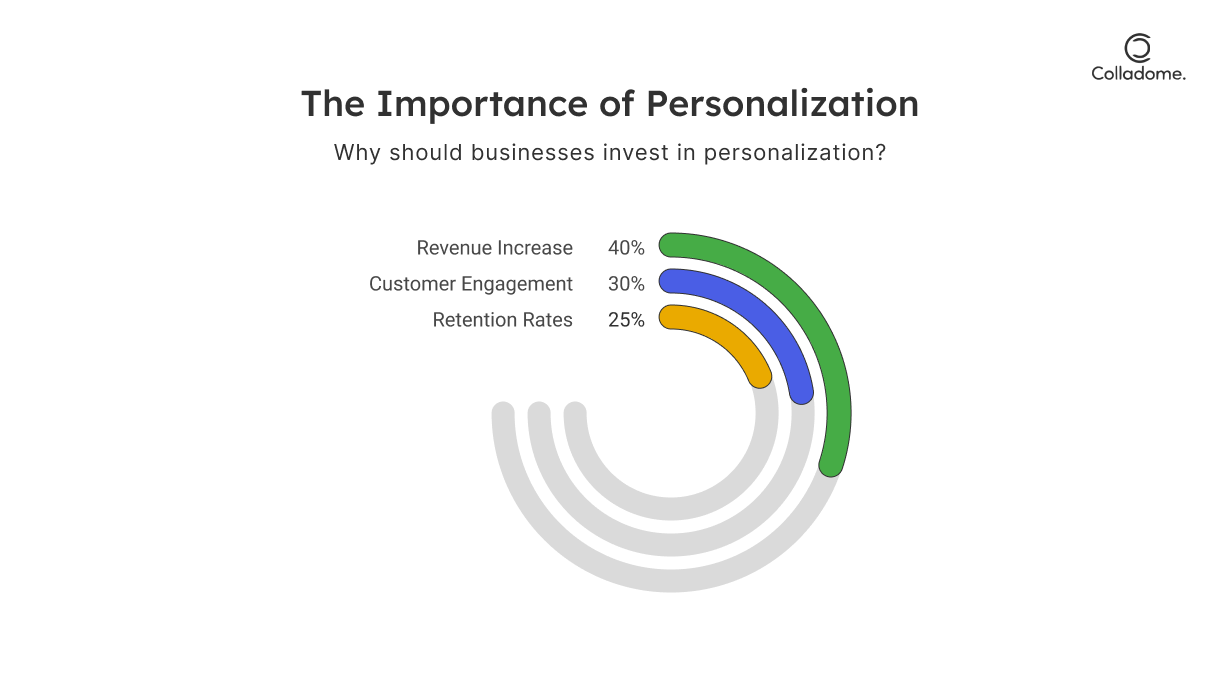
You know those emails or ads that make you stop scrolling because they seem to speak directly to you? That’s content personalization at work. It’s not just about grabbing attention—it’s about holding it.
When customers feel understood, they’re far more likely to interact with your brand. Whether it’s opening an email with a personalized subject line, clicking on a dynamic product recommendation, or spending more time exploring your website, personalization fosters customer engagement like nothing else.
Here’s the thing: people are overwhelmed with marketing messages every day. Personalization cuts through the noise. It makes your brand stand out by delivering relevance in real-time.
Boosted Retention and Loyalty
Personalization isn’t just about attracting new customers—it’s about keeping the ones you already have. And here’s the kicker: studies show that personalization can improve customer retention rates by up to 30%.
Think about it: if a brand remembers your preferences, offers you products you genuinely care about, or sends you exclusive deals that feel like VIP treatment, why would you go elsewhere? These small yet meaningful touches deepen relationships and foster brand loyalty.
Customers want personalization—it’s no longer optional. By tapping into marketing automation, data-driven marketing, and content personalization, you can meet (and exceed) these expectations. Whether it’s improving engagement or boosting retention, personalization is the secret weapon that keeps your brand top of mind.
What Is Digital Marketing Personalization?
 What is digital marketing personalization, and why is it important?
What is digital marketing personalization, and why is it important?
Digital marketing personalization is all about creating customized experiences for your audience by using data and insights to understand their preferences, behaviors, and needs. Instead of sending out generic messages, personalization ensures your content and interactions feel relevant and tailored, helping to build stronger connections with your customers.
How Does It Work?
At its core, personalization taps into customer data—things like purchase history, browsing habits, or even responses to previous campaigns. By analyzing this information, marketers can shape messages, offers, and recommendations that resonate with individuals. Let’s break down a few common techniques:
- Content Personalization: This involves crafting content that aligns with an individual’s interests. Imagine visiting a website and seeing product suggestions or blog posts that directly match your needs—like a fitness blog offering meal plans if you’ve been searching for workout tips.
- Dynamic Recommendations: Big players like Netflix and Amazon have mastered this. Based on your previous behavior, these platforms suggest shows, movies, or products you’re likely to enjoy. It’s all about anticipating your next move.
- Automated Messaging: Tools like email automation help businesses send timely and relevant messages. For instance, after browsing a pair of shoes online but leaving without buying, you might receive an email nudging you to complete the purchase—maybe even with a discount to sweeten the deal.
Why Does It Matter?
The goal of personalization is simple: make customers feel understood. People today are bombarded with information, so they’re more likely to engage with brands that cut through the noise with messages that feel personal and meaningful. A personalized customer journey not only boosts engagement but also increases loyalty and, ultimately, conversions.
Getting Started
Even small tweaks can make a big difference. Start by segmenting your audience into groups based on shared traits, then gradually introduce personalized elements—like using a recipient’s name in emails or curating product recommendations. Advanced tools like AI-powered analytics can take things to the next level by automating and fine-tuning personalization strategies.
In short, digital marketing personalization is about putting the customer first. By leveraging data to meet people where they are and with what they need, brands can create experiences that leave a lasting impression.
How Does Personalization Work?
Creating personalized marketing campaigns might sound complex, but with the right tools and strategy, it’s easier than you think. Here’s how you can make it happen:

1. Collect Data
First things first, you need to gather customer data. This includes:
- Browsing history: What pages are they visiting? How much time are they spending on your site?
- Purchase patterns: What are they buying, and how often?
- Demographics: Basic info like age, location, and gender.
- Social media activity: Are they engaging with your brand on platforms like Instagram or Twitter?
The key is to use tools like CRM systems (think Salesforce or HubSpot) and website analytics platforms (like Google Analytics) to collect and organize this data seamlessly.
Pro Tip: The better your data collection process, the more accurate your personalization efforts will be.
2. Leverage AI and Machine Learning
Enter AI and machine learning—the real MVPs of modern marketing. These technologies help you analyze massive datasets to uncover trends and patterns that would take humans forever to spot.
Take Spotify, for example. Its AI-powered recommendations analyze users’ listening habits to serve up personalized playlists. Whether it’s a daily mix or their iconic “Discover Weekly,” Spotify knows how to keep users hooked.
By using AI, you can:
- Predict customer behavior.
- Optimize product recommendations.
- Automate and refine campaign performance in real time.
3. Implement Marketing Automation
Tools like HubSpot, Marketo, or Klaviyo make marketing automation a breeze. These platforms let you:
- Send personalized emails based on specific triggers (e.g., a cart abandonment email with a discount code).
- Manage multi-channel campaigns seamlessly.
- Save time while ensuring every customer interaction feels tailored.
For instance, imagine a shopper leaves a pair of shoes in their cart. Automation tools can send them a reminder email with a sweet 10% discount, nudging them to complete the purchase.
4. Tailor Content
Here’s where the magic happens: using your data to craft unique messages. Personalization can show up in:
- Subject lines: Emails with personalized subject lines are 26% more likely to be opened.
- Landing pages: Dynamic content can adjust based on the visitor’s location, preferences, or past activity.
A 2023 Adobe report revealed that 80% of consumers are more likely to buy from brands offering personalized experiences. This is a huge opportunity to stand out from the crowd.
Real-World Examples of Successful Personalization
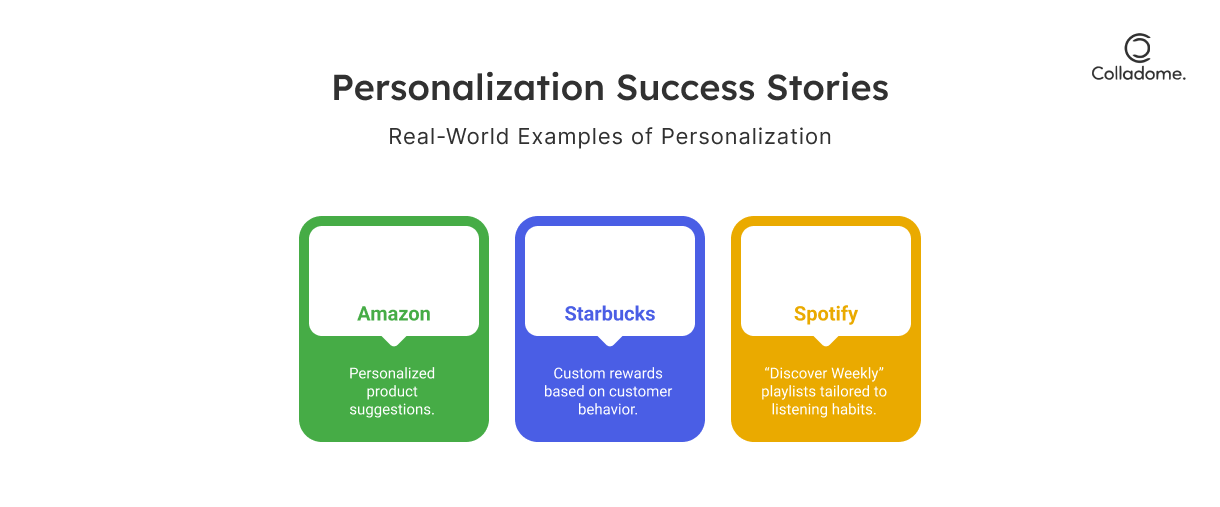
1. Amazon’s Product Recommendations
Amazon’s personalized product suggestions are legendary—and incredibly profitable. Their algorithm analyzes customer behavior to suggest items users didn’t even realize they needed. It works so well that these recommendations account for 35% of Amazon’s revenue.
2. Starbucks’ Rewards Program
Starbucks takes personalization to the next level with its loyalty rewards program. By analyzing what customers order (e.g., latte vs. tea), they tailor their promotions accordingly. If you’re a latte enthusiast, expect offers on lattes—not chai teas. This approach helped Starbucks boost revenue by 10% in 2022.
3. Spotify’s Wrapped Campaign
Spotify’s Wrapped campaign has become a viral sensation. It creates personalized, year-end summaries for users based on their listening habits. In 2023, over 120 million people engaged with Wrapped, proudly sharing their music stats on social media. It’s the perfect blend of data-driven personalization and shareable content.
Latest Facts and Figures
- Revenue Impact: Businesses that excel at personalization report a 40% increase in revenue compared to those that don’t.
- Email Success: Personalized email subject lines have a 26% higher open rate.
- AI Adoption: 70% of marketing leaders implemented AI in 2023 to improve customer engagement and personalization efforts.
Future Predictions: The Next Wave of Personalization
Table 1: Predicted Growth of Personalization in Marketing Tools (2024–2028)
| Year | Marketing Automation Adoption (%) | AI-Powered Personalization Usage (%) |
| 2024 | 55% | 65% |
| 2025 | 62% | 72% |
| 2026 | 68% | 79% |
| 2028 | 75% | 85% |
Table 2: Benefits Businesses Expect from Personalization by 2028
| Benefit | Percentage of Businesses Expecting It |
| Increased Customer Retention | 85% |
| Improved Customer Satisfaction | 80% |
| Higher Conversion Rates | 78% |
| Enhanced Brand Loyalty | 72% |
How to Use Data for Personalized Customer Experiences
Want to create marketing that truly connects? It’s all about harnessing data effectively. Here’s a simple guide to get started:
1. Segment Your Audience
The first step is breaking your audience into smaller, meaningful groups. Instead of treating all your customers the same, categorize them based on:
- Age: What appeals to Gen Z might not resonate with Baby Boomers.
- Location: Seasonal products or events can be targeted by region.
- Interests: Are they fitness enthusiasts, tech lovers, or homebodies?
Segmentation ensures your messages hit the mark by addressing what matters most to each group.
2. Use Predictive Analytics

Here’s where it gets exciting! Predictive analytics tools use data to forecast what your customers might want next. This is a game-changer, especially for e-commerce businesses.
For instance:
- If someone buys running shoes, predictive tools might suggest workout apparel or fitness trackers.
- If a user frequently browses outdoor gear, you can recommend camping equipment or hiking trails nearby.
These insights come from analyzing past behaviors and trends, helping you serve up recommendations that feel almost psychic.
3. Test and Optimize
No campaign is perfect right out of the gate. That’s where A/B testing comes in. Test different versions of your personalized campaigns—like subject lines, images, or offers—to see what resonates best.
For example:
- One email subject might say “Exclusive Offer for You,” while another reads “Your Perfect Summer Gear Awaits.”
- Compare the open rates and click-through rates to determine the winner.
By continuously testing and optimizing, you can fine-tune your personalization strategy for even better results.
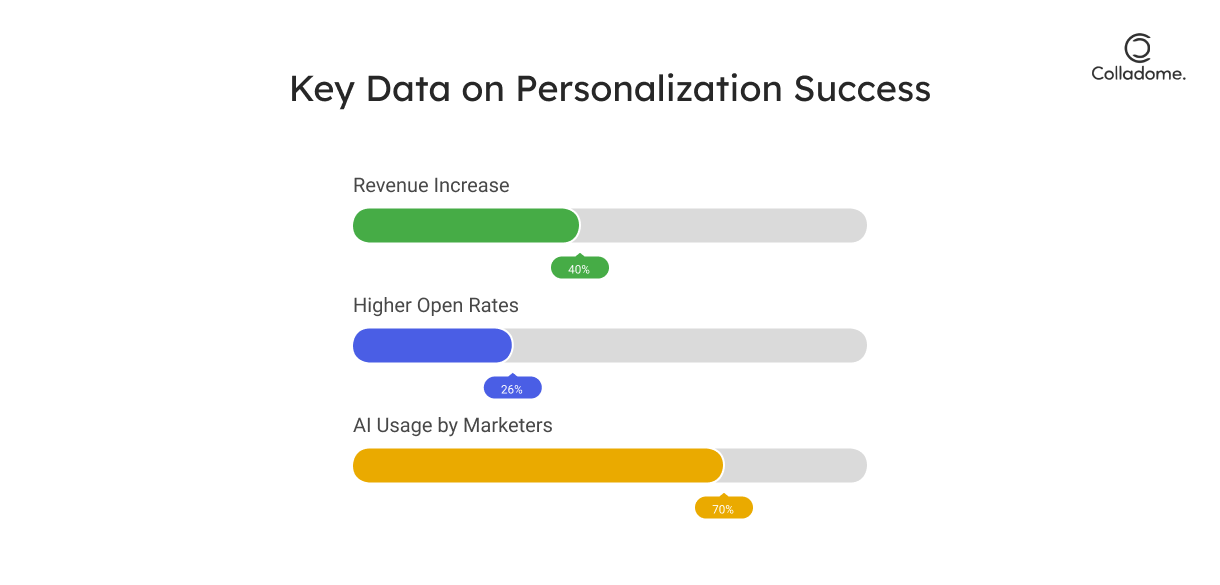
Why It Works
Using data thoughtfully lets you deliver hyper-relevant experiences that make customers feel understood and valued. With segmentation, predictive analytics, and regular testing, you’ll be well on your way to creating campaigns that truly connect!
Conclusion
And there you have it—the ultimate guide to personalization in digital marketing, aka the secret sauce for modern marketing success. By focusing on content personalization, using tools like AI and marketing automation, and effectively leveraging data, you can craft campaigns that do more than just grab attention. They can engage, convert, and build lasting customer loyalty.
In today’s fast-paced digital world, customers expect more. They want brands to understand their needs, anticipate their desires, and deliver experiences that feel tailored just for them. That’s why personalization isn’t just a buzzword; it’s a must-have strategy. Whether it’s a dynamic product recommendation on Amazon, a loyalty reward from Starbucks, or Spotify’s Wrapped campaign, the brands winning the game are the ones making their customers feel seen and valued.
Start Small, Experiment, Succeed
The beauty of personalization is that you don’t have to go all in from day one. Start small:
- Segment your audience.
- Try personalized subject lines in emails.
- Use simple tools like Google Analytics to track and understand customer behavior.
From there, experiment and iterate on what works. Use A/B testing to fine-tune your approach and discover what resonates most with your audience.
It’s About Connections
Remember: Personalization isn’t just about selling. Sure, it helps boost conversions and ROI, but at its core, it’s about creating genuine connections with your customers. When people feel like a brand gets them, they’re not just buyers—they become advocates.
So, what are you waiting for? Start personalizing your campaigns today and watch your engagement rates soar while building relationships that last. That’s what great marketing is all about.
